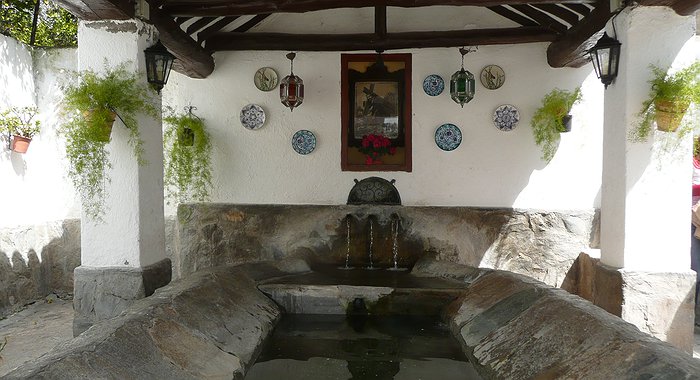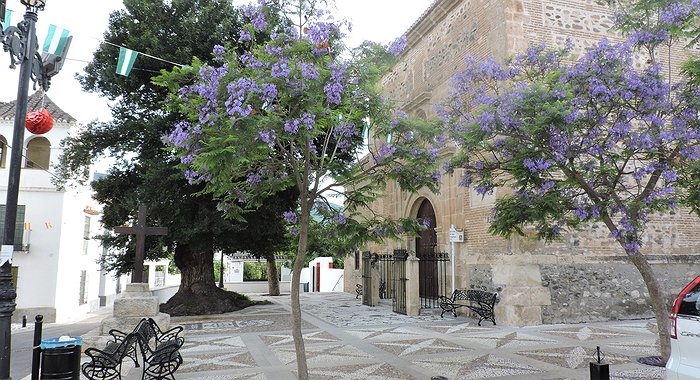I agree Our site saves small pieces of text information (cookies) on your device in order to deliver better content and for statistical purposes. You can disable the usage of cookies by changing the settings of your browser. By browsing our website without changing the browser settings you grant us permission to store that information on your device.
El Valle is a municipality in the province of Granada, comprising the towns of Melegís, Restábal and Saleres, since 1972. The Town Hall is currently in Restábal where most of the services are located.
The geographical location of the municipality makes it halfway to the main tourist attractions of the province, as it is forty minutes from the Alhambra, Sierra Nevada and the Costa Tropical.
The remains of watchtowers, the agricultural system of irrigation channels and terraces as well as its urban structure of narrow streets, courtyards and dead-end streets, make us see that this is a municipality of Muslim tradition.
It has a special microclimate, being located in the lowest area of the Lecrín Valley. This factor, together with the abundance of water makes the lands very fertile. They are towns mainly dedicated to agriculture, predominating the horticultural products along with orange and lemon trees and a great diversity of fruit trees.
The popular Irish Hispanist Ian Gibson has lived in this municipality since 1991.
The town of Melegís is located on the left bank of the Torrente River and in the middle of an orange and lemon grove. It is situated at an altitude of 553 m. It has 650 inhabitants dedicated almost exclusively to the cultivation of citrus fruits. It is 1.5 km from Restábal, 8.5 km from Dúrcal and 34 km from Granada. It has a spring of healing thermal waters.
The location in which this beautiful town is located makes us enjoy landscapes like from the hill of the Cemetery to 1 Km. of the town, in which it is contemplated an extraordinary panoramic of the towns of this low part of the Valley as well as of the dam of Béznar in its totality. We can also enjoy the thermal spring of El Baño, located 2 km from the town, below the Cemetery, whose waters cure skin conditions; as well as the banks of the Béznar reservoir and the confluence of the Torrente river, which can be reached by paths.
Otro de los atractivos turísticos del municipio es la gastronomía, que abarca un gran repertorio de platos típicos como el remojón de naranja, el puchero de cardos e hinojos, las migas y los dulces caseros.
Los platos más típicos de la localidad de Melegís son: el puchero de hinojos y el remojón de naranjas.
→ Melegís Carnivals, with the performance of local chirigotas (variable dates). The local people started the carnival festival in Melegís not long ago, and the event is now fully consolidated. The whole town dresses up and goes out into the street. There is also a local chirigotas contest.
→ Citrus Fair and Orange Festival, to promote the local product (week before Easter). The aim of the fair is to promote citrus fruits, the mainstay of agriculture in the area. To this end, technical conferences are held to promote tourism, agriculture and gastronomy. There are activities such as hiking, gastronomic competition, tasting, cultural visits and sale of local products.
→ The festival of San Antonio (13 and 14 June). These are the fiestas in honour of the town's patron saint, which include religious celebrations, fireworks, popular meals, a musical festival and the Antonio Ruiz Cycling Trophy.
→ The Virgen del Rosario fiestas (first Sunday in October). Festivities in honour of the patron saint of Melegís, which include religious celebrations; a rociera mass; Rosario de la Aurora with a great chocolate drink; children's activities and a popular verbena.
These beautiful towns allow both locals and foreigners to carry out outdoor activities, and thus enjoy their landscapes.
Among the leisure and sports activities in the town of El Valle, we highlight:
Games of brisca, julep and paulo in the bars of the towns
Thrush, partridge, rabbit, wild boar and mountain goat hunting
Fishing for barbel and carp.
Sports activities such as football, tennis and basketball
desde Calle Naranjo, 16, 18658 Melegís, Granada, España a Calle Cárcel Baja, 19b, 18001 Granada, España
| Desde | Melegis |
| Hasta | Granada |
| Hora de salida | 10:46 |
| Hora de llegada | 12:29 |
| Distancia | 39,4 km |
| Duración | 1h 43 min |
desde Calle Cárcel Baja, 19, 18001 Granada, España a Melegis, 18658, Granada, España
| Desde | Granada |
| Hasta | Melegis granada |
| Hora de salida | 18:10 |
| Hora de llegada | 19:40 |
| Distancia | 40,1 km |
| Duración | 1h 30 min |

The Melegis Washing Fountain Although young people can't imagine it, until recently there was no water in the houses. The recent past is relative, for them it is a life, at a historical level it was two days ago. Between the 60s and 70s of the last century, the structure of the sanitary network composed of water supplies and drains was installed. In Melegís, they were installed around 1974. Until this moment the fountain system was basic as it was the usual form of water supply that the whole population used to have. To be able to wash oneself, which at that time was not called showering, due to the almost total absence of these devices. To be able to wash the dishes or do the laundry, the fountain system was a blessing, because if you had it close by and it was good, you would be grateful. Melegís has "always" had one of the most beautiful washing fountains in the region. Although we believe that its origin had to have a sink at ground level since that was the system, during the 20th century and in the post-war period it was adapted as best as possible and in almost all places the water pylons were placed at waist level to make washing more comfortable. The Melegís fountain has a beautiful shed partly covered with tiles and poplar beams, painted to prevent deterioration. And headed with a Christ of the Cloth of Moclin. It is very well preserved and it is good to highlight the goodness of what it was, although today it lets its water flow and most new people wonder what it was for.
